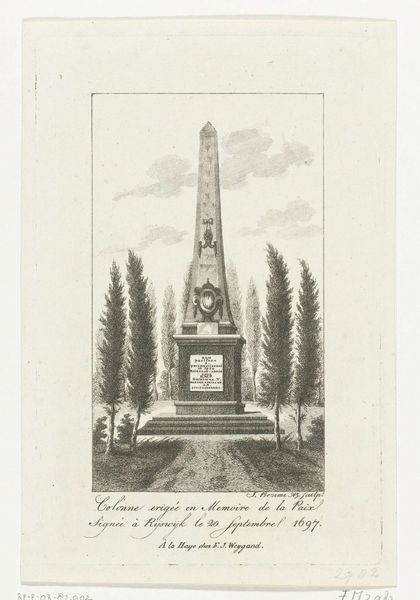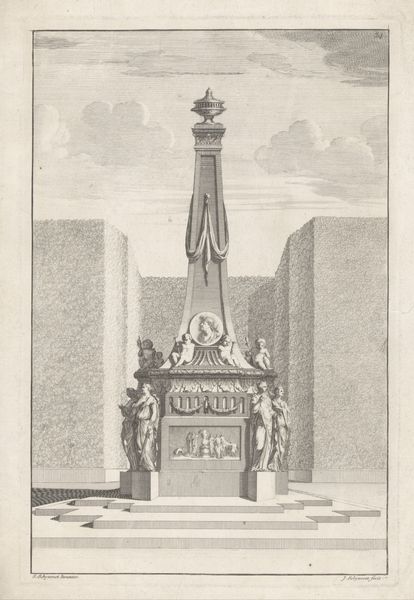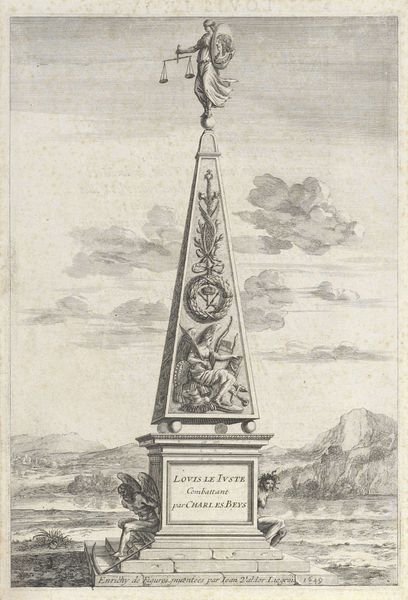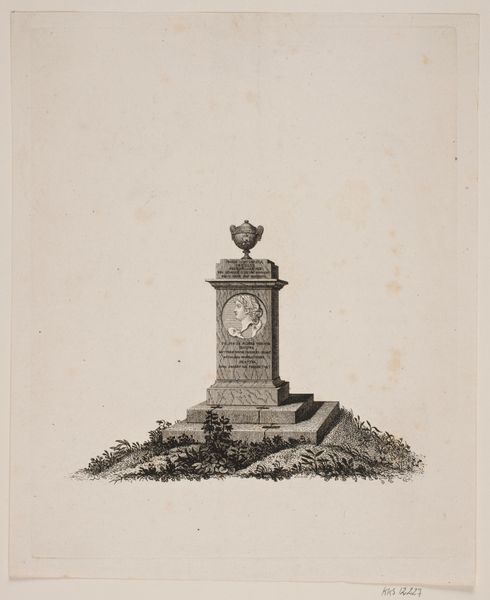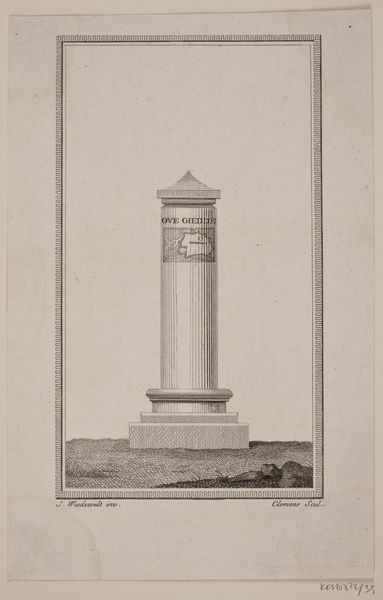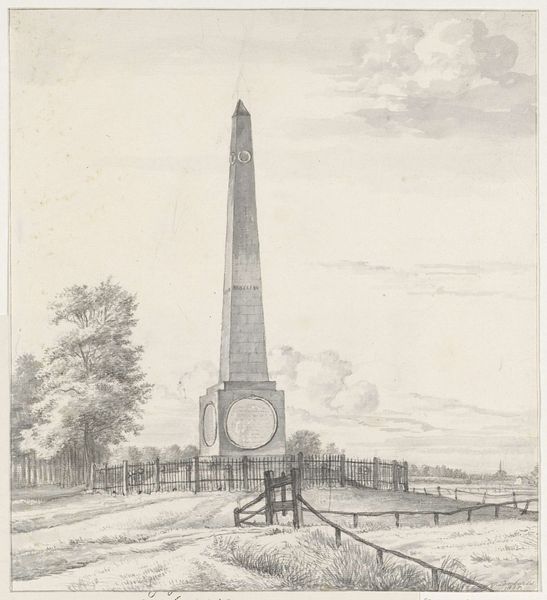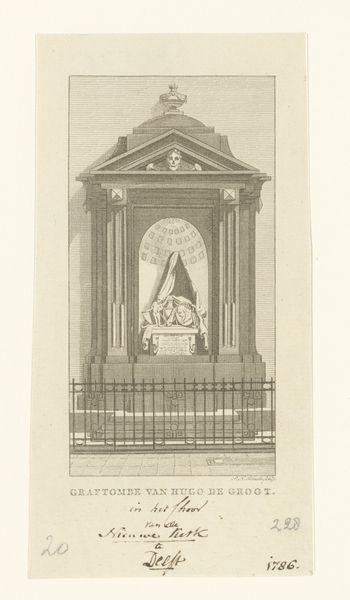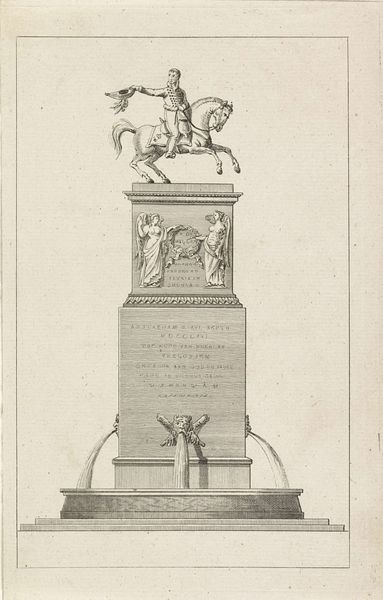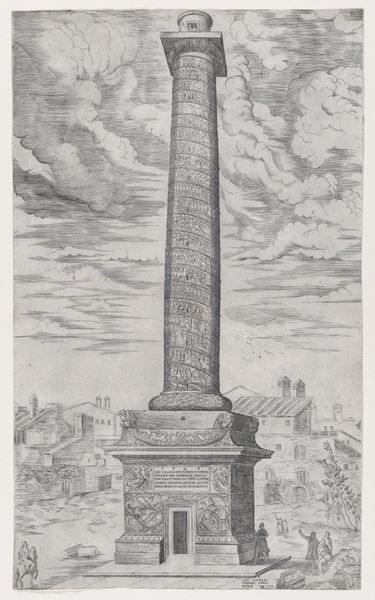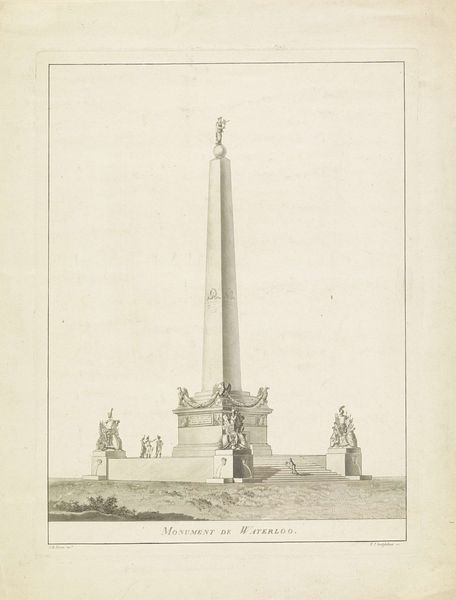
Grafmonument voor auteur Rhijnvis Feith op begraafplaats te Zwolle 1825 - 1855
0:00
0:00
print, engraving
#
neoclacissism
# print
#
landscape
#
historical photography
#
19th century
#
history-painting
#
engraving
Dimensions: height 188 mm, width 115 mm
Copyright: Rijks Museum: Open Domain
Curator: It possesses a solemnity, doesn't it? Stark and undeniably mournful. Editor: Yes, it does. What we're looking at is an engraving titled "Grave Monument for Author Rhijnvis Feith in the Cemetery in Zwolle," created sometime between 1825 and 1855 by Johannes Alexander Rudolf Best. Curator: The symmetry of the monument is striking, classic Neoclassical lines, capped by what looks like a draped urn. A potent symbol of loss, universally understood, marking absence. Editor: Indeed, and positioned in what seems to be a meticulously rendered cemetery. The rows of graves stretching into the background establish a visual context, underscoring Feith's place within the broader community of the departed. It speaks volumes about public mourning in the 19th century. Curator: Notice the bas-relief on the monument's base. It's a scene depicting figures surrounding what might be an altar or a dying figure—a visual invocation of mourning rituals and familial comfort in the face of death. The engraving style is typical of Neoclassical art with austere outlines, emulating ancient Greek and Roman relief carvings to suggest an elevated cultural legacy. Editor: Precisely. And there's that cartouche with intertwined initials. I'd wager that is the Feith family's emblem—a powerful signifier for lineage and societal position. It suggests how death and remembrance are tied up in identity and power. Do you see the chains? Even these add another symbolic and physical layer to the space, marking exclusivity. Curator: It evokes a sense of cultural continuity, too. These visual choices connect the author to historical archetypes of greatness, attempting to keep his memory alive not just personally, but also in relation to cultural tradition. It serves as a constant reminder of virtue, legacy, and a family's role in maintaining that memory. Editor: I think that sums it up nicely. This piece reminds us that mourning rituals are, were and continue to be a reflection of societal values and power structures. Curator: A beautifully rendered artifact, laden with visual meaning, speaking to both individual sorrow and enduring cultural narratives.
Comments
No comments
Be the first to comment and join the conversation on the ultimate creative platform.
